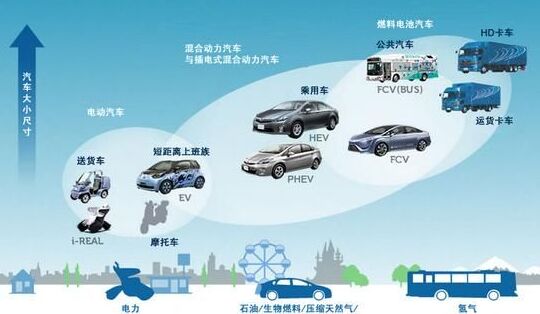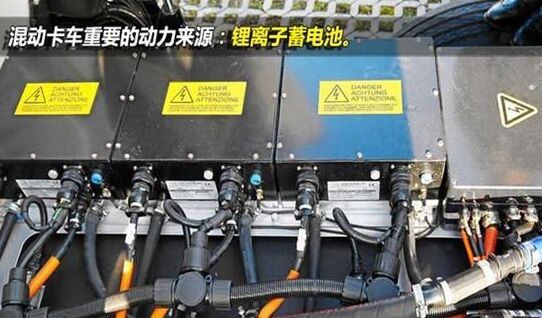Produced by: Science China
This article refers to the address: http://
Production: Cape Lemaker team
Producer: Computer Network Information Center, Chinese Academy of Sciences
With the increase of automobile exhaust pollution and the consumption of fossil energy such as petroleum coal, the development of new energy vehicles is a common trend in the world. Due to the large power consumption of automobiles, the clean energy sources in the traditional environmental protection concept, such as solar energy and wind energy, are in a lot of water in this field.
At present, the world's actively developing new energy vehicle technologies are mainly concentrated in three directions: pure electric vehicles, such as the familiar Wolfs Fustrasla; oil-electric hybrid cars, the more famous Japanese brand pioneers Prius Fuel cell vehicles, there are reports that a Japanese car brand plans to introduce hydrogen fuel cell vehicles in 2018.

Three new energy car models
Each of these three technologies has advantages and disadvantages:
Pure electric car: clean and affordable, but energy supplement is a hard injury
A pure electric car, like a mobile phone, is charged in plug-in mode (using an external power supply, charging the car battery through a transformer and cable). The advantage is that the electric energy is clean and affordable, the motor has large torque, fast acceleration and low noise; the disadvantage is that the energy supplement depends on the hardware facilities. (Torque is a special kind of torque that causes the object to rotate. It is inversely proportional to the engine speed under the condition of fixed power. The faster the speed, the smaller the torque, which reflects the load capacity of the car within a certain range.)
For example, at present, the world's top pure electric vehicles need more than 7 hours to charge if they are charged by ordinary household circuits. If they use a dedicated charging pile with a cost of up to 100,000 US dollars, it takes 1-2 hours to fill. According to the cruising range of 250-300 km of the fully-charged state of the car, it is ok to travel around the city and charge every night. The long-distance self-driving tour is a bit reluctant, only 300 kilometers a day, and at night to find a place to charge, can not do the traditional fuel car "days and miles." It is even more impossible to drive it to Lop Nur, Tibet, Xinjiang, because even the gasoline is not necessarily available along the way, let alone charging.
Fuel cell vehicle: green, but the equipment is heavy and bulky
Fuel cell vehicles use fuel cells to generate hydrogen, which reacts chemically with oxygen in the atmosphere to produce electricity to drive the car. The reaction of the fuel cell produces an extremely small amount of carbon dioxide and nitrogen oxides. The main by-product of this kind of chemical reaction product is water, which is called green new energy vehicle.
At this stage, the disadvantage of fuel cell vehicles is that the equipment is heavy and bulky. Long starting time and need to improve the system's vibration resistance: due to the relationship between hydrogen, the sealing requirements are quite high, relatively speaking, the risk of accidents is relatively large.
Note: A fuel cell is a power generation device that directly converts chemical energy present in fuel and oxidant into electrical energy. Fuel and air are fed into the fuel cell separately, and the electricity is wonderfully produced. It looks like a positive and negative electrode and electrolyte, like a battery, but in essence it can't "storage electricity" but a "power plant."
Hybrid vehicles: converting waste energy into electricity
Finally, we are the protagonist of today: hybrid electric vehicles. It refers to a car powered by fuel and electric energy. It is the most practical and grounded member of the current new energy vehicle. Many people think that "hybrid" will be the development trend of automotive technology in the coming decades.
The hybrid electric vehicle uses the electric motor as an auxiliary power of the internal combustion engine to jointly drive the automobile. This technology is fuel efficient and mechanically stronger. Fuel costs are lower compared to cars of the same class. Due to its physical characteristics, the motor produces much more torque at start-up than the internal combustion engine, with more robust start and acceleration performance.
In traditional internal combustion engine vehicles, energy efficiency is low. Due to the four-stroke design of the traditional internal combustion engine, under 80% of the road conditions, an ordinary car uses only 40% of the fuel power (heat energy released by combustion), and will fall to 25% in the urban area. That is to say, only 25%-40% of the released thermal energy is converted into mechanical energy to do work, driving the vehicle forward. Hybrid technology is designed to collect the wasted energy into electrical energy and provide it to the car as a second power through the electric motor.
Three kinds of "weapons" for hybrid electric vehicles
To achieve the ability to collect waste into electricity, hybrid vehicles will have three more systems than regular fuel vehicles.
Energy recovery system. Everyone knows that cars driving on the road at a certain speed are kinetic. When the car brakes, some of the kinetic energy becomes heat dissipation under the friction of the brake pads. When the car is waiting for the traffic lights, the engine is also idling at the idle speed to burn the oil, and these energy are wasted. The energy recovery system collects the energy wasted from these traditional cars.
Energy storage system (battery). The collected energy is converted into electrical energy, stored in the battery, and supplied to the motor when needed.

Electric motor: It uses the electric energy in the battery as an energy source to provide power to the car and drive the vehicle.
These three systems and the original internal combustion engine system and the brake system of the car, through the training and improvement of the engineers, finally achieve a seamless integration: when the car brakes deceleration and parking idling, they actively collect the wasted energy and store it in the battery. When the car starts and accelerates, the motor assists the internal combustion engine to work together to improve the maneuverability of the vehicle.
The mechanical performance of hybrid electric vehicles is strong. A new domestically produced hybrid electric SUV with an acceleration of 0-100 km/h is less than 5 seconds! What is the concept? Anyone who knows the car knows that most of the models in the traditional auto market are not accelerated by 100 km. There are only about 40 models in the 5 seconds, accounting for less than one percent of the total models, and most of them are priced at more than one million yuan. If this is the case, does it immediately reflect the advantages of a hybrid car?
Oil-electric hybrid technology has brought new cars to the world with faster speed, lower fuel consumption and less pollutant discharge. What is more valuable is that it is not delicate at all, does not rely on external hardware support, and supplies oil to oil and gas. Strong, will become the mainstay of the future new energy vehicle technology.
UV Photocatalytic Exhaust Gas Purifier
Uv Photolysis Device,Gas Purification System,Waste Treatment Equipment,Uv Photocatalytic Exhaust Gas Purifier
Dongguan V1 Environmental Technology Co., Ltd. , https://www.v1airpurifier.com